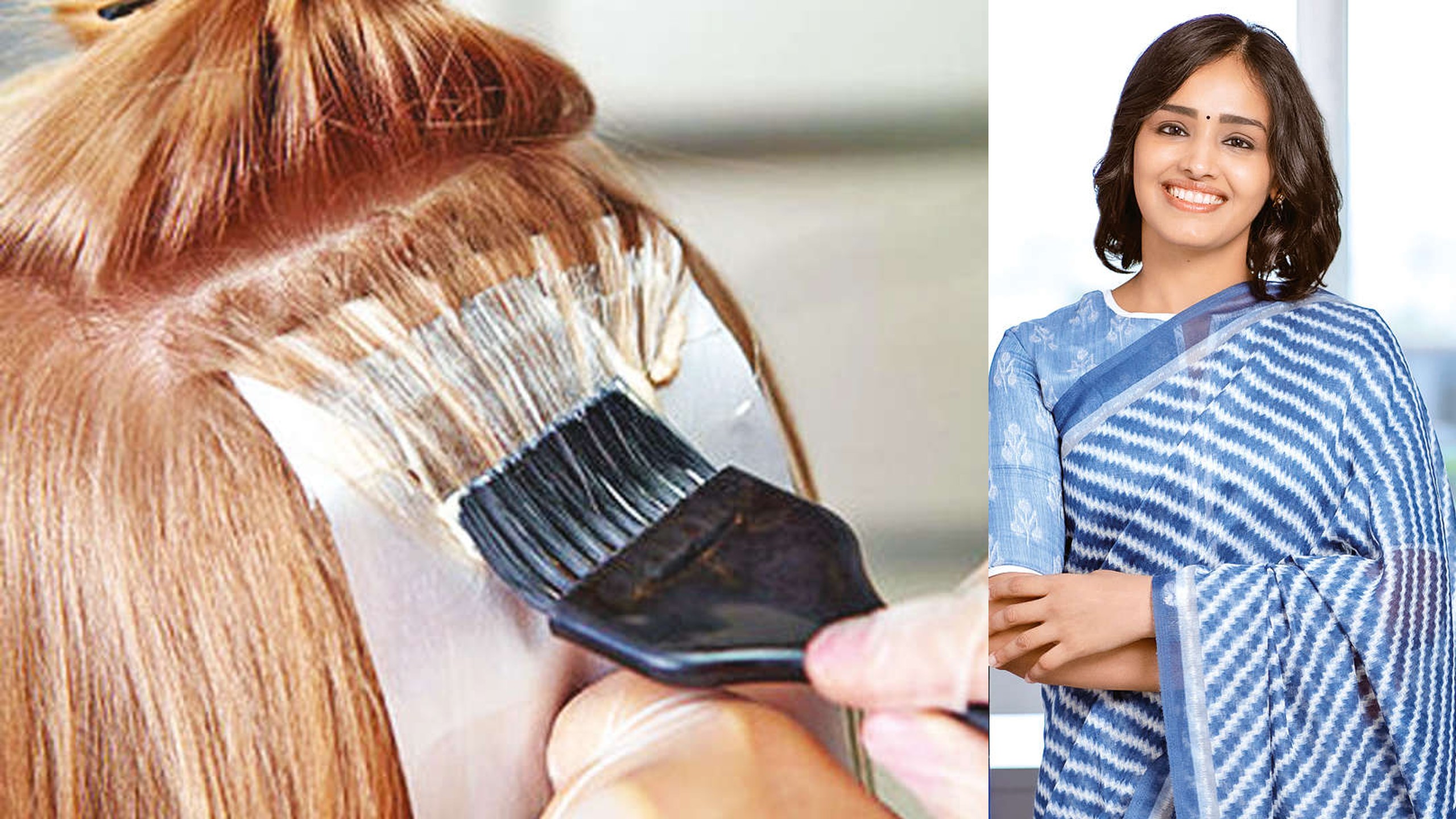What you need to keep in mind while colouring hair, tips & care
From a dermatologist’s point of view, hair colouring or hair dyeing is not very skin friendly.

CHENNAI: Hair colour has become a trend these days. Everyone we know and even most adults around us have tried out some form of hair colour – either for covering greys or for fun.
From a dermatologist’s point of view, hair colouring or hair dyeing is not very skin friendly. Hair colour contains irritant and sensitizing substances like ammonia which cause allergies.
But more importantly, hair colour contains certain chemicals like Para-phenylenediamine, which can cause progressive skin darkening with prolonged use.
In some people, you can easily spot this as brownish to bluish-black, deep pigmentation along the sides of the cheek and the temples.
So what should you look out for, when you are colouring your hair? Here are some tips to prevent skin darkening from hair dye use.
Check the ingredient list. You would want to look for a specific ingredient called Para-phenylenediamine. It will be listed either as PPD, p phenylene diamine, or PP diamine. You may even have to check the fine print for this ingredient, as this agent is the one to avoid to prevent skin darkness due to hair colour use.
Black henna is not a great choice either, as the chemical content is often, very high even though we may think it is herbal.
Do not colour your hair with dense colours like jet black, or deepest black. Go for the lightest shade possible that is similar to the look you want. Darker colours in general are more likely to contain PPD.
Instead of going with a global colour, you could try layering or highlights – this trick will reduce the obvious visibility of the grey root, thanks to the optical illusion created by the clever layering of colours. This depends on your colourist’s expertise.
Temporary hair colours may be a good idea for root touch up, so that you can allow a little more time, between hair colour sessions.
If you already have conditions like melasma, you may be at a higher risk for hair dye-induced pigmentation.
Check your vitamin levels. B12 deficiency is known to be associated with premature greying. Sometimes there may be evident anaemia as well. Correcting vitamin deficiencies may help in slowing down the rate of greying. This, in turn, would help reduce the frequency of your hair colouring.
People generally have the tendency to colour their hair just before heading out on a summer vacation. This is not a great idea! The interaction of the colouring agent on your skin with the sun can lead to skin damage and hyperpigmentation. And this can happen, even if you are only using henna leaves to colour your hair.
Avoid having skin treatments like chemical peels done, right when you have just coloured your hair. This may increase the chances of skin pigmentation. Steaming, sauna, facials – these are best avoided, right after hair colour. A week’s gap would be good.
The best way to prevent overall facial pigmentation, is to protect the skin with a good sunscreen. That’s the starting point of good skin care.
You will be able to prevent hair dye-induced skin pigmentation, to some extent, with these tips. Once the pigmentation occurs, it may take a long time to reduce – so this is a condition that’s best prevented than treated!
— Dr Renita Rajan, chief consultant dermatologist, Render Skin and Hair.
Visit news.dtnext.in to explore our interactive epaper!
Download the DT Next app for more exciting features!
Click here for iOS
Click here for Android



